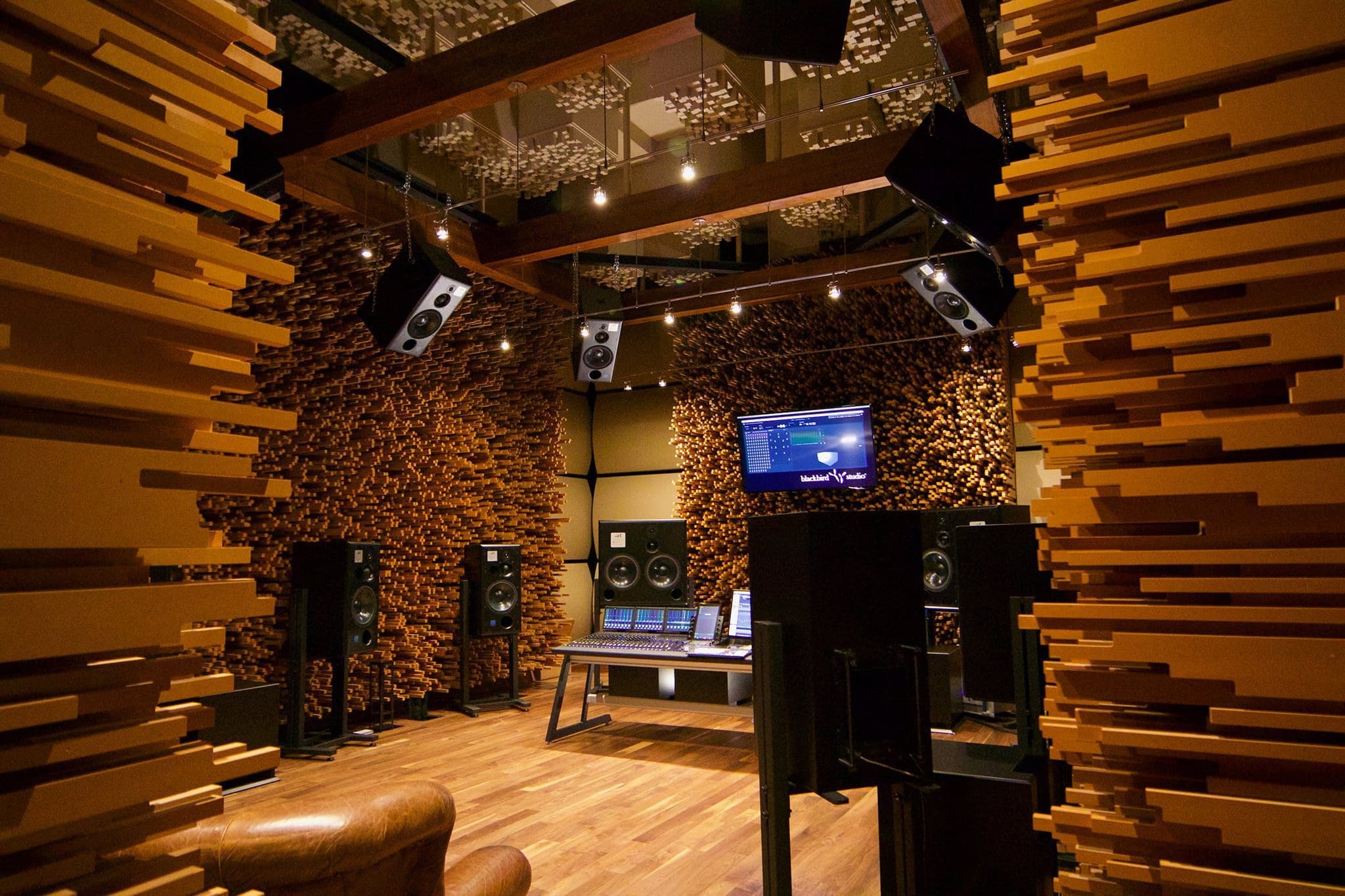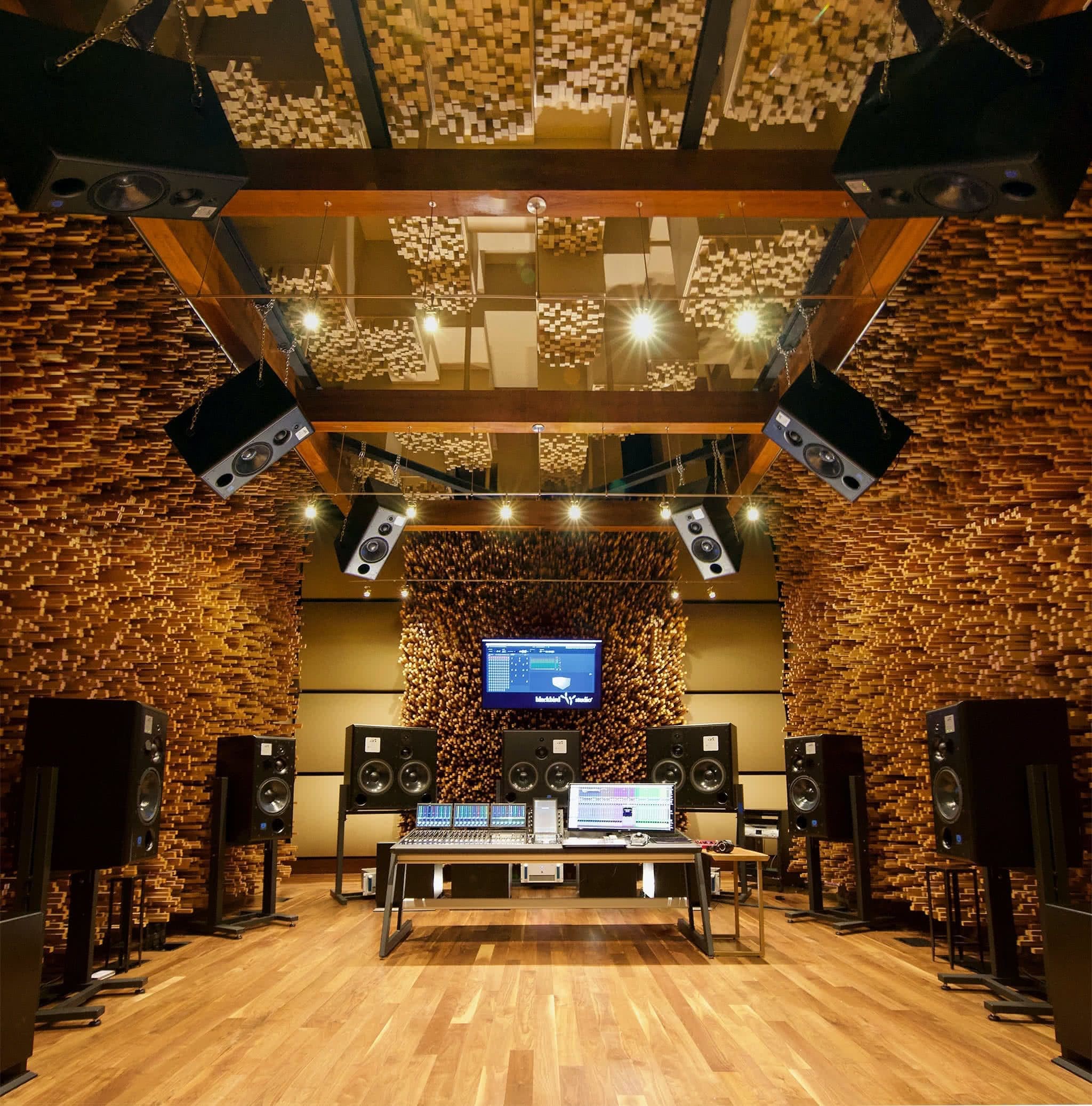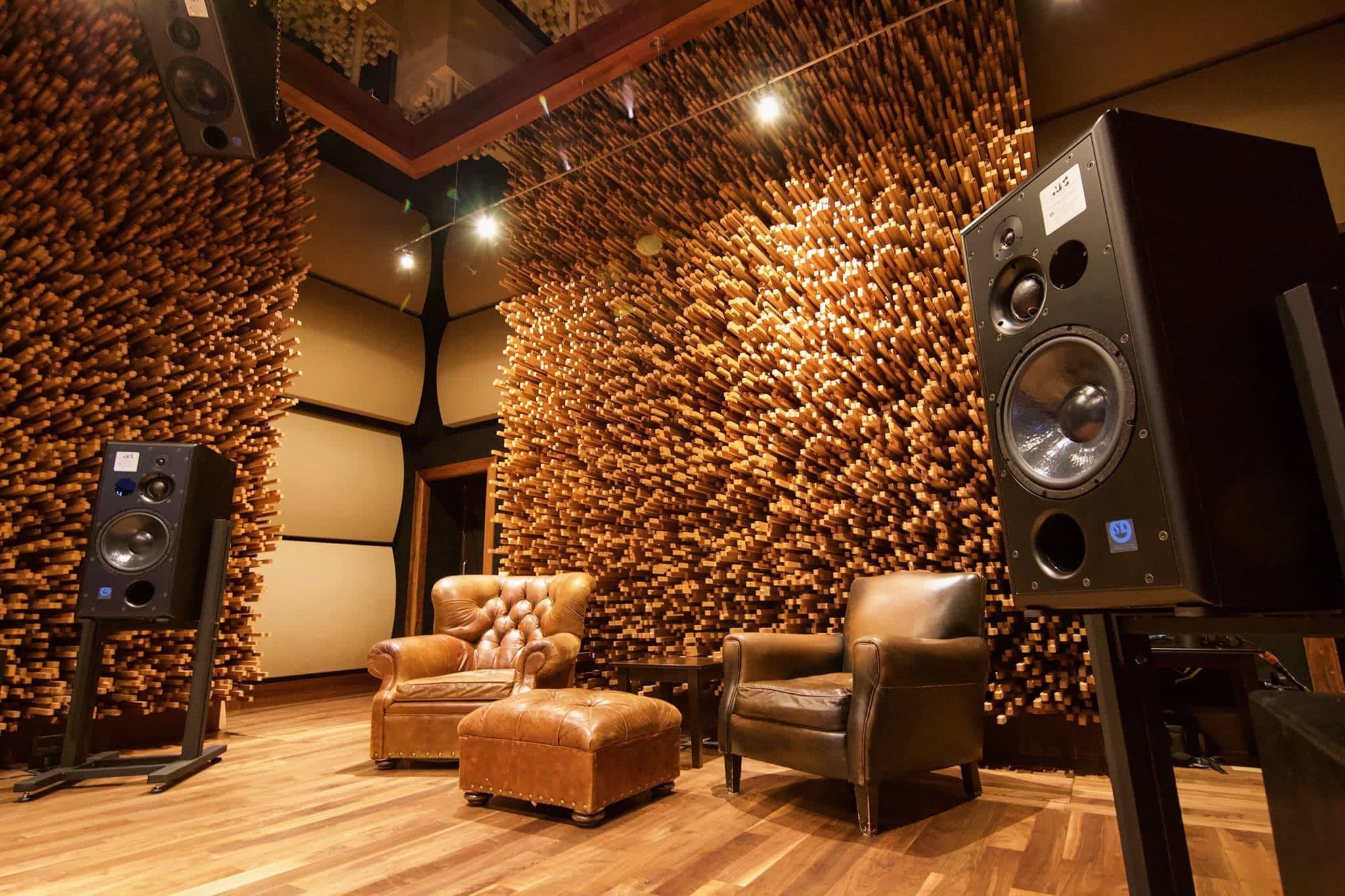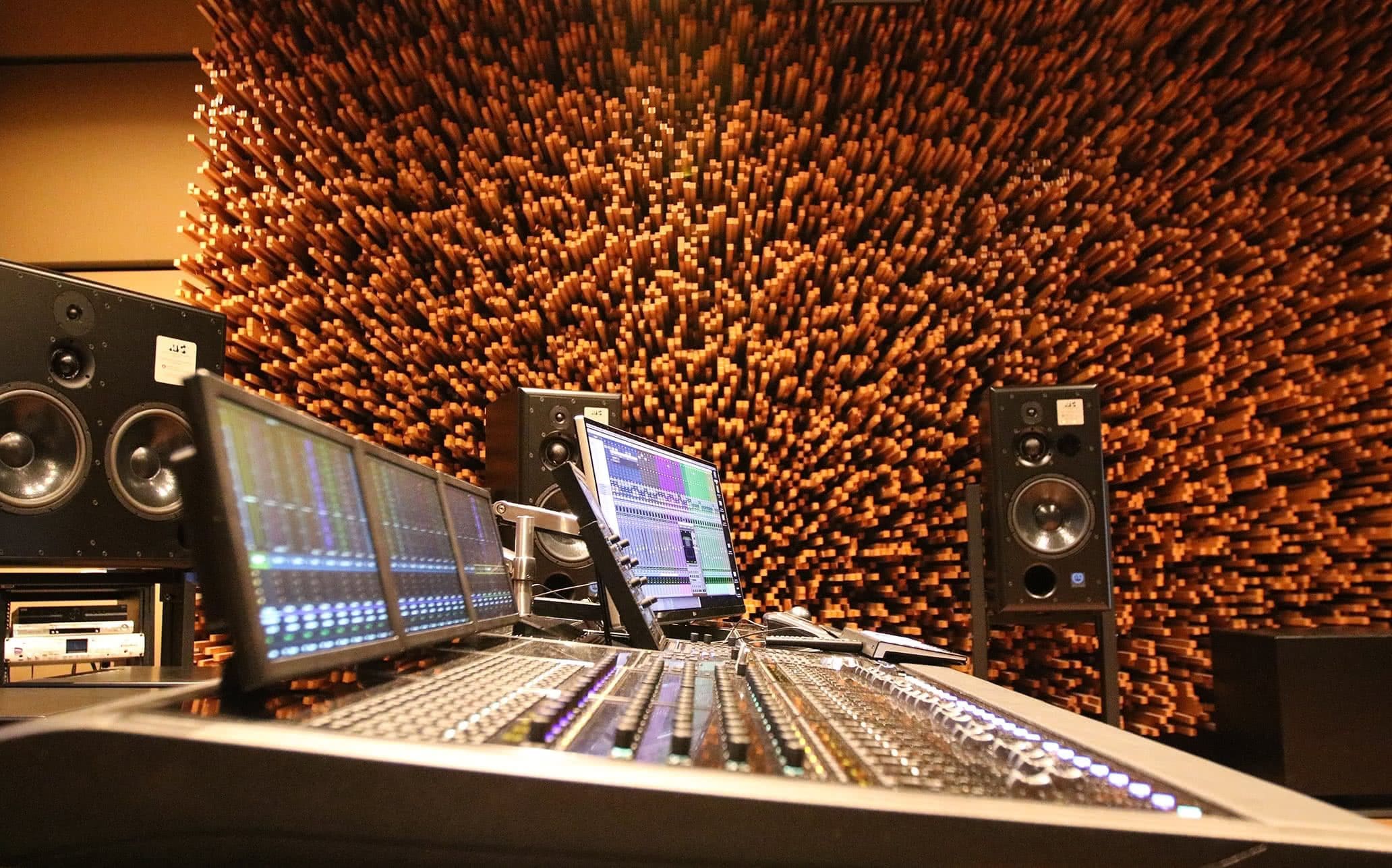Since its founding, Blackbird Studio has sought to be of Nashville’s most technologically unique audio institutions. One of the minds behind this mission joined The Blackbird Academy students for a day as a guest engineer!
George Massenburg is an acclaimed innovator within the audio landscape. He’s a Grammy, TEC, and ACM award-winning producer, and his credits include records with Billy Joel, The Chicks, and Earth, Wind & Fire. However, Massenberg is best known around Blackbird for his work on Studio C’s immersive sound design.
One of the most acoustically and visually diverse recording spaces in Music City, Studio C is one of the finest Dolby Atmos mix and playback environments in the world. Along with Dr. Peter D’Antonio (founder of RPG Diffusor Systems, Inc.), Massenberg designed the space based on a 10,000-page spreadsheet of acoustic algorithms. Studio C was first open to the public in 2019 for a NAMM listening party. The studio walls are comprised of 38,646 individually-sized sticks of formaldehyde-free MDF wood, totaling over 100,000 lbs.
Blackbird Academy students are truly advantaged with incredible guest lecturers, Massenberg certainly included. He shared some of his best practices, unreleased future projects, and expertise honed in the trenches of immersive sound design.
When asked about how to create an immersive, real-world sound, Massenberg said, “It’s always been a question. What to put in the back and what to put in the front, and what to put on the top, and what to put where? The classical approach has been audience inverted with the audience in the back, and that’s not that much fun.
He further explained his connection to innovation by encouraging students to “Just look for something that stops you. I built an equalizer because I couldn’t make the equalizers in the day work, to really be surgical… Nobody else was going to do it, so I had to do it. By the same token, I don’t do what there are plenty of other people doing.”
Massenberg continued to explain how this philosophy affected his teaching. He views teaching students how to mix as both a conceptual and technical practice, especially stressing the practice of trying to recreate the nuances of their favorite tracks.

“It’s not a safe job, and it’s also tough on the artists… You understand that because you’re trying to serve the artist. The idea is to try to be transparent with the artist. Your pictures are not going to be on the cover, and it’s not about you – as hard as that is to hear. It’s about transparency to the artist’s vision and trying to interpret the artist’s vision. Understanding different personalities, how to listen to them, and how to interact. Whew, that’s a gig.”
Massenburg mixing in Studio C
Massenburg lecture
Massenburg at work






